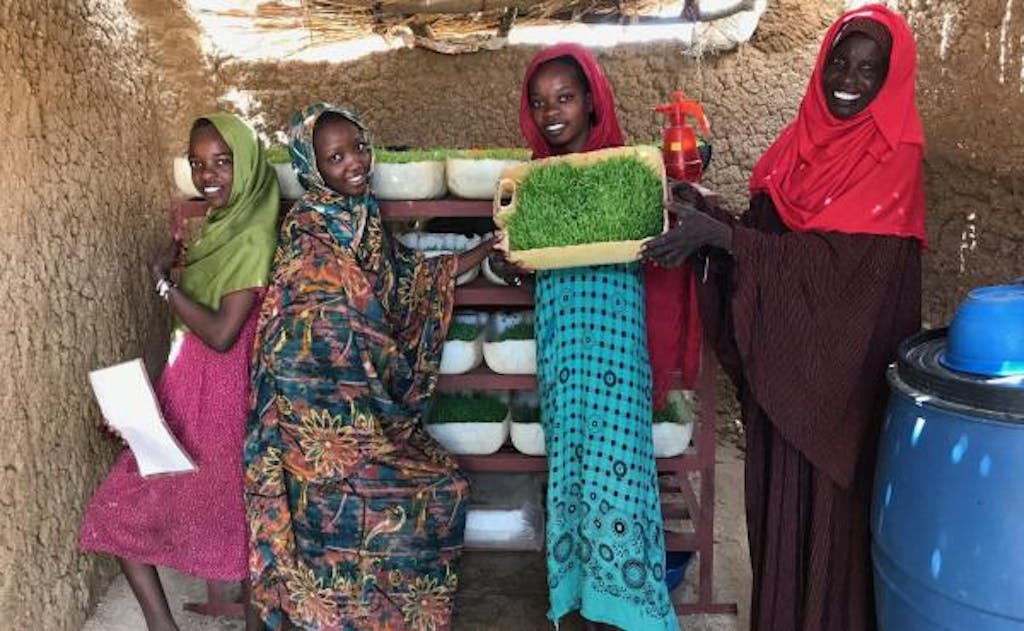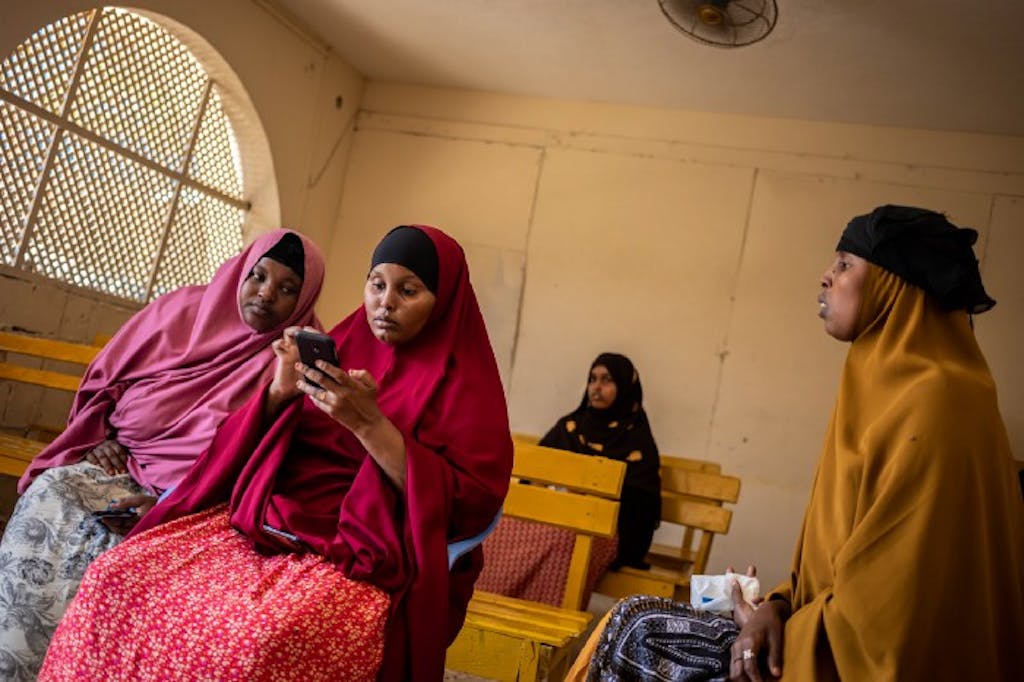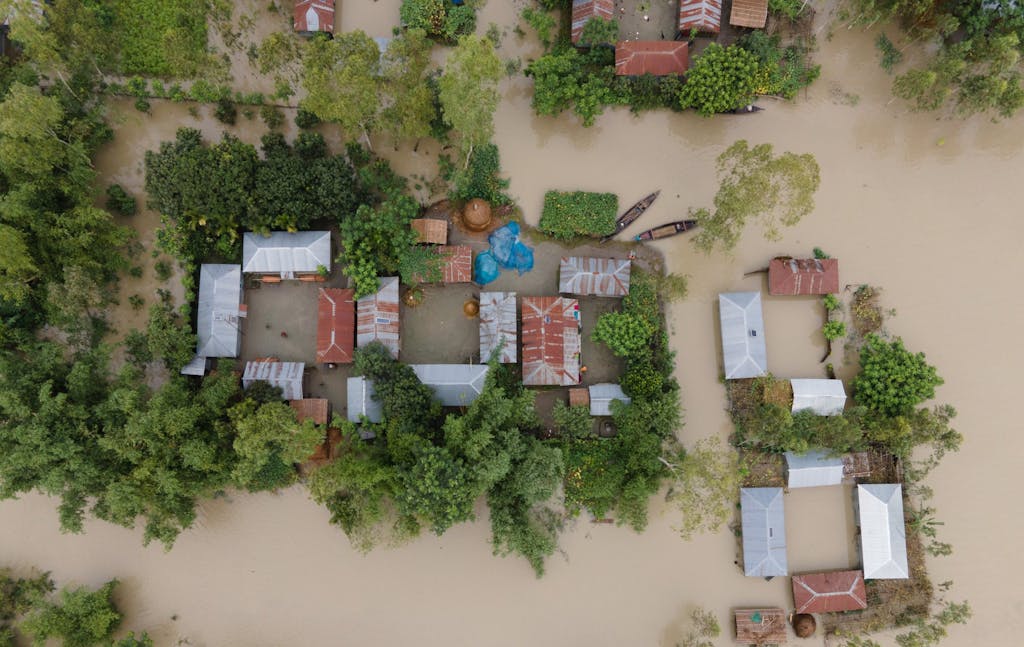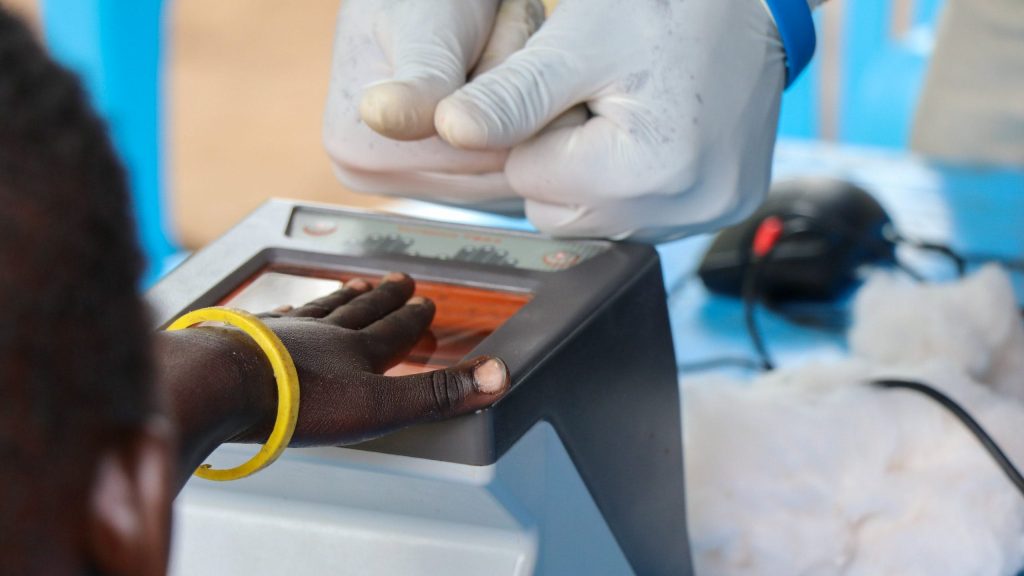
SCOPE is WFP’s platform to collect information and assist people wherever they’re. It helps to confirm people’s identities, handle money assist, and extra. picture: WFP
Digital expertise is revolutionizing the wrestle in direction of world hunger.
as a outcome of the world’s largest humanitarian agency, the United Nations World meals Programme (WFP) has been on the forefront of this modification. From using satellite tv for pc imagery to forecast drought and drone expertise to map disaster harm, WFP is reimagining emergency response.
In a mannequin new report, Digital Foundations, the agency explores how digital expertise has enhanced its operations and saved lives inside the approach. I spoke with WFP’s Senior Digital Advisor Jean-Martin Bauer about what this digital transformation appears like on the underside and the most interesting method it is enhancing WFP’s work to finish world hunger by 2030.
Q: as quickly as we focus on digital utilized sciences and transformation, we typically think about this as a latest phenomenon, however WFP has been inside the enterprise of using digital devices to increase its work for a whereas. are you able to focus on how WFP’s use of digital devices has grown and developed?
Jean-Martin Bauer: I’ve labored at WFP for 20 years now. In that time, there’s been a sea change in how we use expertise. the place we’re at the second in 2021 can be pretty fully different from the day I walked inside the door of the Niger nation office in 2001. The enterprise was sending piece of email over extreme-frequency radio to our deep subject places of work that did not have every fully different style of connectivity — this was about bringing piece of email to the humanitarian entrance line.
You’d ship an piece of email out of your laptop computer to an office inside the desert. That piece of email was turned proper into a packet of information that was despatched by radio, acquired on the deep subject location, decrypted, and turned into an piece of email on their laptop computer. It was like magic!
at the second, we’re someplace that’s fully fully different. nonetheless it occurred in a very incremental method. For the humanitarian sector, we’re seeing investments made 15 years in the past bearing fruit at the second. One event is WFP’s cell VAM enterprise, which started in 2012 and supplied for automated information assortment using SMS, using interactive voice response. It was dropped at scale for the 2014 Ebola outbreak in West Africa and helped us attain places that had been beneath quarantine. So we had been in a place to ship insights on meals safety and humanitarian wants in places we couldn’t attain.

HungerMap reside can hone in on the meals safety state of affairs at each nationwide and subnational ranges. picture: WFP
That has now turned into what we name HungerMap reside, a platform based mostly on synthetic intelligence and machine studying that gives granular exact-time insights into hunger in virtually ninety nations on the earth. And what they did is that they constructed on information streams — collectively with the cell surveys I simply talked about — however in addition fully different datasets to current these very appropriate predictions of meals insecurity.
So improvements have constructed on themselves. anyone who visits the HungerMap reside internet website and has entry to this style of granular information doesn’t basically understand that that is work that’s gone again 10 years.
The report is stuffed with fully different examples of how WFP is using digital devices and innovation to work in a distinct method and extra effectively. I’d want to hearken to extra about how prioritizing digital transformation inside WFP has modified the lives of people inside the nations by which you are employed.
I’d say the very most interesting event that entails thoughts is what we do with digital funds. as quickly as extra, taking you again 20 years, all of WFP’s assist was “in form,” which meant we would put meals on a ship, then it’d should go on a barge, then be delivered to a refugee camp or to a group that wished the assist. That’s a course of that will take months. Now we’re in a place to get money transfers to people who want meals assist in a matter of days after the money hits their checking account.
It makes WFP’s work simpler, nonetheless it’s additionally acquired pretty a pair of advantages for native communities. if you do money transfers, you’ve acquired a multiplier of 1.three on every dollar you spend inside the neighborhood. That helps us have a wider, constructive footprint inside the neighborhood because you foster an whole cascade of financial interactions that revenue the host group. And that’s a method of setting up meals assist work greater for people.
earlier than coming to ny, i used to be in Congo for virtually 4 years. We found a quantity of worth in early warning methods. that is an space that is fully modified as a outcome of of expertise. as quickly as i used to be there, we had two very critical years of flooding inside the Ubangi River associated to local climate change. It was the worst flooding as a outcome of the Sixties and displaced a full lot of hundreds of people. The Ubangi River in Congo is inside the north on the border with the Democratic Republic of Congo [DRC] and the Central African Republic. It’s very distant. There are not any roads to get there. people reside alongside rivers so that you want boats to understand them. simply getting information when one factor occurs in that a part of the nation is terribly difficult. however we had been in a place to make the most of extreme-decision satellite tv for pc imagery and know in a quick time what quantity of people we wished to assist. so as that exact-time information helped us understand how a lot funding we wished, and helped us work with the federal authorities to know what the approach should be.
these had been a pair of of basically the most harrowing circumstances I’ve seen as a humanitarian expert. You’ve acquired people on their roofs, screaming for assist. When people want assist immediately, you’d possibly’t look forward to a pair of weeks for information to trickle down by an analog system. you want exact-time information. And if we’re in a place to carry assist when people want it basically the most, it’s an whole sport-changer. It means humanitarians are lastly doing issues the most interesting method they had been meant to be accomplished.
“When people want assist immediately, you’d possibly’t look forward to a pair of weeks for information to trickle down by an analog system. you want exact-time information.”
Jean-Martin Bauer
Senior Digital Advisor, World meals Programme
One important theme inside the report is round cooperation. I’d want to hearken to considerably extra regarding the fully different methods in which WFP works with companions throughout sectors to ship assist all by the world.
What i actually like is WFP’s Innovation Accelerator, based mostly in Munich. It was created to be an space for innovators with funding from the German authorities. And the thought is that in a single place, you’ve acquired WFP, universities, and the private sector all collaborating, exchanging ideas, and co-creating options for hunger. They’re engaged on some fascinating AI [artificial intelligence] tasks with Google evaluation, as an event.
The Innovation Accelerator is about better than merely funding. It’s about gaining entry to expertise. It’s an interdisciplinary residence that permits for mannequin spanking new ideas and cross-fertilization. The partnerships and the connections that come collectively in a spot like our Accelerator matter better than a test a donor may write.

one in all WFP Innovation Accelerator’s tasks is thought as H2Grow. this approach brings domestically adaptable and low-cost hydroponic options to susceptible communities all by the world. picture: WFP
The report cites two essential world challenges which may even be altering the character of hunger all by the world: COVID-19 and local climate change. are you able to inform me about how the pandemic has modified WFP’s work, and what it uncovered by approach of needing greater digital infrastructure?
When COVID hit, misplaced employment and the affect on agriculture and current chains precipitated elevated meals prices and widespread meals insecurity. i used to be in Congo on the time, and inside the metropolis of Brazzaville, the pace of meals insecurity rose from 10% earlier than COVID to 35% after. people had been determined for meals. the identical factor occurred all by the HIV pandemic in southern Africa. We realized all by the Ebola outbreak in West Africa and in DRC that offering meals helped people preserve at residence and reduce again the unfold of the virus.
So meals and well being go collectively. I’m hoping that after COVID, we’ll understand that any good public well being response will must have a safe meals safety part as properly.
And as you mentioned, the pandemic additionally dropped at mild the large alternatives to make the most of digital expertise in our work. This meant scaling up contactless methods of serving to beneficiaries. WFP additionally arrange an emergency market so fully different UN organizations, NGOs [nongovernmental organizations], and governments may faucet into our current chain and logistics expertise in a clear method.
Hopefully, one in all many silver linings of COVID is that it’s accelerated a pair of of these efficiencies and these new methods of collaborating contained in the UN.

women in the ready room of WFP e-store in Mogadishu, Somalia. picture: Ismail Taxta / WFP
And all of that occurred in a quick time — particularly as quickly as we take into consideration change in large organizations and bureaucracies.
Taking a pair of of these classes and obsessed with one other world problem, are you able to discuss considerably bit about how WFP is using digital devices inside the context of pure disasters, agricultural shocks, extreme climate, and fully different outcomes of local climate change?
local climate change has modified WFP’s work. proper now, Madagascar is experiencing what WFP is wanting the “first local climate change-induced famine.” we now should understand that issues are most seemingly going to worsen besides we strengthen adaptation to local climate change on the native stage and alter our methods of working. Digital expertise gives an environment nice method to start out responding to local climate change.
What’s occurred over the previous few years is a large change inside the current of earth assertion information, which helps us understand what’s occurring and which communities are most affected by local climate change. proper now, a small satellite tv for pc may even be in-constructed a day. so that you’ve acquired a full lot of satellites orbiting the earth, capturing imagery that’s beamed again to analysts in exact-time who’ve a look at crops, vegetation, what’s occurring inside the underside, and that will assist us greater understand menace on the micro stage and develop plans which may even be tailored for diverse communities.
It additionally helps us act forward of time. In South Sudan, the place we now have one in all our largest operations, WFP makes use of information analytics and optimization to make sure we get basically the most out of our funds. as a outcome of of optimizing computer software, we’re in a place to do extra pre-positioning of commodities forward of the moist season.
all of us know battle is the main driver of hunger all by the world. How is WFP using a pair of of its personal digital transformation to raised reply to this problem?
expertise can assist take away grey areas in our information. beforehand, we would say that an space is simply too dangerous as a outcome of we now haven’t acquired any information. Now we’re in a place to see settlements of internally displaced people pop up on satellites so we’re in a place to discover them. We’re in a place to see impacts on crops.
My colleagues in West Africa have accomplished a very fascinating enterprise on earth assertion in central Mali, the place you’d possibly even see the affect of battle on crops and grazing floor by evaluating pictures earlier than and after episodes of violence.

local climate, battle, and macroeconomic shocks severely have an effect on native meals safety. WFP makes use of information modeling to evaluate their affect to make sure a well timed response. picture: WFP
are you able to inform me about how WFP is working to shield the information of people and communities it serves inside the case of this new expertise?
There’s a very massive onus on WFP to get issues proper and to be delicate about factors round safety. We work with one hundred million people, a pair of of whom are basically the most marginalized of their societies. i really feel one in all our biggest achievements has been the creation of a world information safety office. We’ve acquired a group of consultants — the very most interesting inside the enterprise — advising us on these factors. I think about it’s one in all many first places of work of its form inside the UN system. We’re actually proud to be main in that space.
the place do you see the most interesting alternative, or what gives you basically the most hope in tackling world hunger?
i really feel the most interesting alternatives are the very indisputable actuality that governments all by the place inside the world are starting to have the capacities to make the most of the devices I simply described. They’re not for WFP or for the UN alone. we now have the probability to share these devices, so nations can use them to wage their very personal wrestle in direction of hunger.
one in all many massive buzzwords inside the UN proper now’s “anticipatory movement,” which solely works in case you’ve acquired an information system to again it up. thankfully, we’re in a spot the place there’s extra information than ever earlier than. And all of us know what inquiries to ask greater of information than ever earlier than. so as that makes me optimistic that we’re going to be extra responsive finally.
i started my profession inside the Sahel inside the early 2000s and West Africans had been telling me regarding the responses to meals insecurity all by the good droughts of the Seventies and the Eighties. It took for a lot longer for assist to reach. We didn’t have the identical devices. We didn’t have the identical information.
So the democratization of information and analytics, to me, is most seemingly going one in all many good alternatives. I’d want to see one factor like an information commons take form.
proper now we now have the information, the analytical capacities, and the processing power to take movement method better than we ever may. Now that we now have all this information, we now have method extra accountability to answer.

